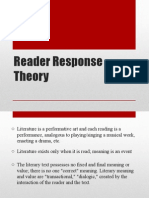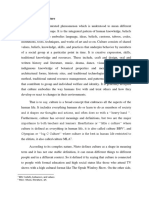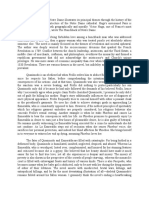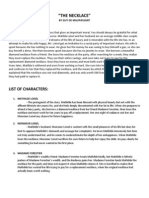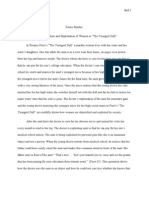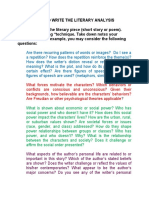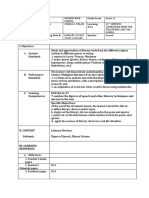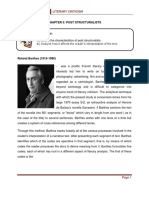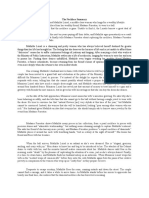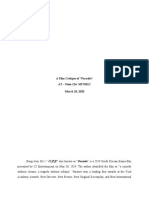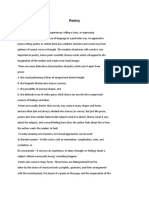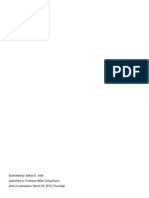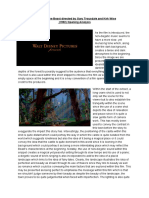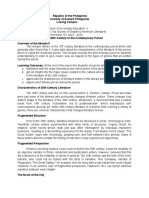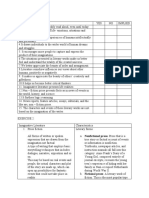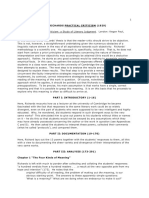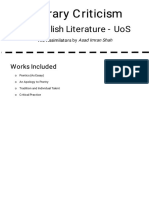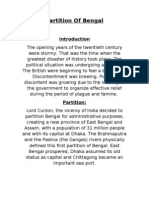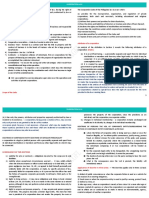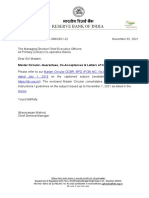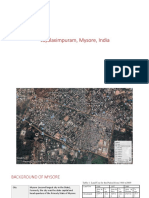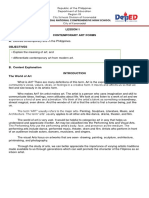0% found this document useful (0 votes)
440 views6 pagesReader Response Criticism
Reader Response Criticism is a literary theory that focuses on how readers actively create meaning from a text based on their own experiences rather than finding meaning inherent in the text. Key aspects are that readers engage with the text through an interactive reading experience and interpret it based on their own cultural and historical context as part of an interpretive community. Major theorists who contributed to Reader Response Criticism include Hans Robert Jauss, Wolfgang Iser, Louise Rosenblatt, Stanley Fish, and David Bleich.
Uploaded by
mmuhammadwaleed786Copyright
© © All Rights Reserved
We take content rights seriously. If you suspect this is your content, claim it here.
Available Formats
Download as PDF, TXT or read online on Scribd
0% found this document useful (0 votes)
440 views6 pagesReader Response Criticism
Reader Response Criticism is a literary theory that focuses on how readers actively create meaning from a text based on their own experiences rather than finding meaning inherent in the text. Key aspects are that readers engage with the text through an interactive reading experience and interpret it based on their own cultural and historical context as part of an interpretive community. Major theorists who contributed to Reader Response Criticism include Hans Robert Jauss, Wolfgang Iser, Louise Rosenblatt, Stanley Fish, and David Bleich.
Uploaded by
mmuhammadwaleed786Copyright
© © All Rights Reserved
We take content rights seriously. If you suspect this is your content, claim it here.
Available Formats
Download as PDF, TXT or read online on Scribd
/ 6
